Jenn is Crying Happy Tears
November 5, 2008

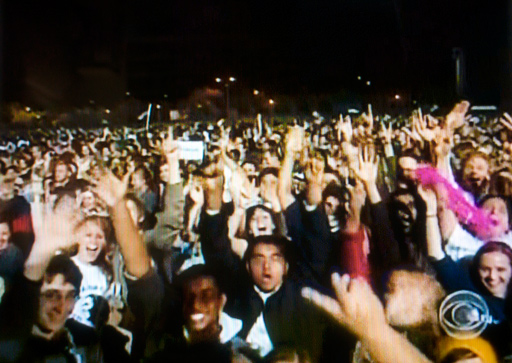
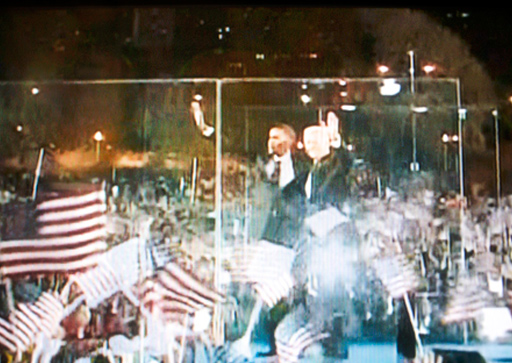



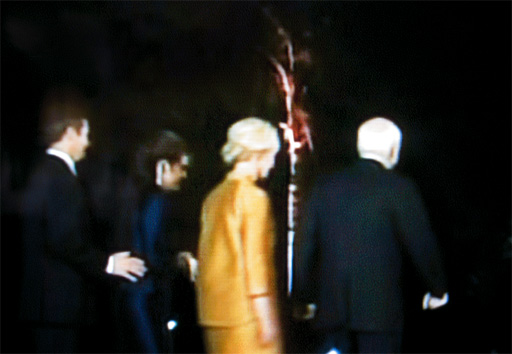
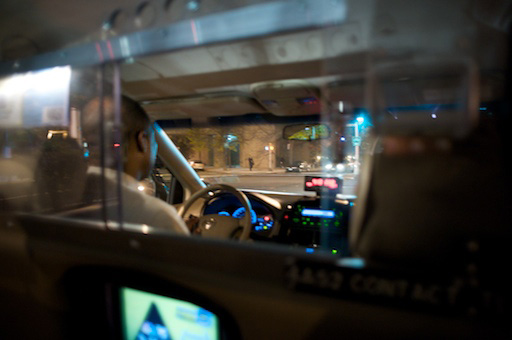
At about 2am last night I took a cab from Manhattan to Brooklyn. It was my fifth cab of the day and this driver and like all the other drivers today wanted to talk about the election. The drivers were a diverse lot ranging from a Bangladeshi immigrant to a man who moved to New York from New Orleans after the flood, but all the conversations had a common theme. They men started by asking me who I was voting for and when I said Barack Obama, they would say they were so glad and that they hoped he would win too. Then they enumerated their reasons for supporting him but all ended with a variation of "They won't let him win."
The election stealing conspiracies varied from computer fraud, to hidden racism, to vote fraud, but despite my protestations none would allow themselves to believe that Obama could actually win, almost as if the disappointment of losing would be to great. I'll spare you a long oratory (I suspect blog audiences are largely self selecting and the vast majority of you are already in the Obama column). But I wanted to say, let's prove the fears of these men unfounded. Get out there and do this thing right.
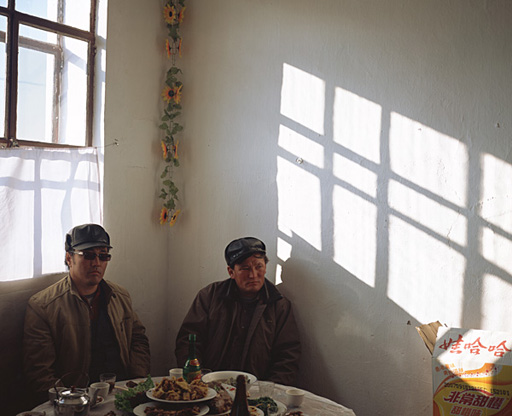
One of the special thrills in photography is coming across a photographer who has travelled some of the same roads you have travelled, looking at their images, and saying 'I have stood right there, I have seen those things.'
I know nothing about Chinese photographer Eris Yo's life, but I know we've walked some of the same paths, and I love the way she's seen things along the way.
If navigating her website is too abstruse, you can find more of her work on flickr, and on her blog (written in Chinese).
'Emergency Mind' as in "We are all so worried about her, we all have emergency mind."
-From my Korean mother in law (apparently a literal translation of a Korean phrase).
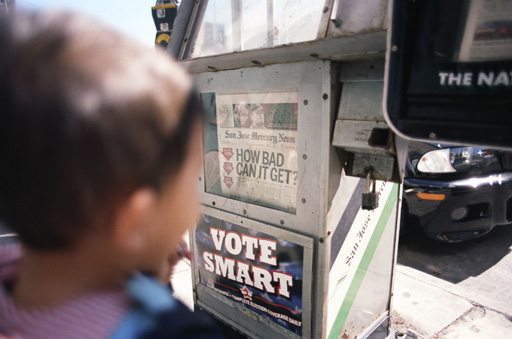
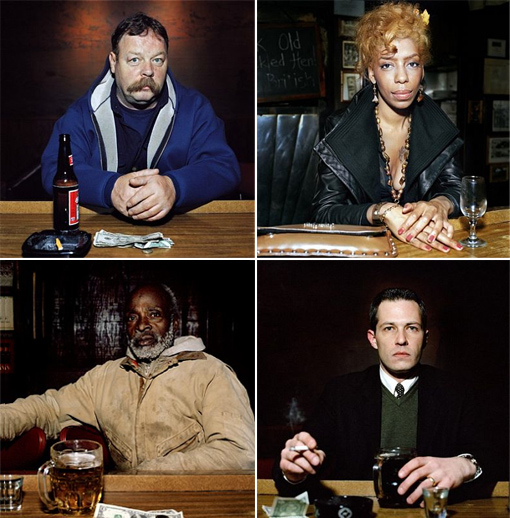
I was thumbing through a months old copy of the NY Times Magazine in a doctor's office this morning and happened upon Sara Stolfa's project titled The Regulars which documents the patrons of McGlinchey's tavern in Philadelphia (where she worked as a bartender). It's a fascinating study in loneliness.
Stolfa was also in the band The Delta 72 (now defunct). She played organ. How cool is that?
Related: NY Times Article
Overheard at Gray's Papaya yesterday afternoon and transcribed practically verbatim:
"I keep having these dreams about Abraham Lincoln. He's sitting on the couch in his top hat and everything and we are talking about my problems with Susan. He keeps telling me not to worry, "Mary was worse, you know." And then after he gives me some real wisdom on the female mind, I start thinking about everything going on in the world, and I think, 'Holy shit why don't I ask Abe what to do'. And it's like he's reading my mind... he turns to me and says, "Don't worry we've been through worse." And then he hugs me and I think, 'Abe Lincoln hugged me. He smells like Old Spice.' I ask him who he supports in the election, and he smiles and says, "Believe it or not you're the first person who's asked me that this year; of course I support Barack. These so called Republicans remind me of Copperheads." And then he laughed sort of sad a deep ha ha ha laugh and I woke up. This dream had me so jacked up I couldn't sleep. I just kept beta-ing it over and over. I literally couldn't sleep. I saw him. I smelled him, he felt real. His jacket was scratchy. His hat had a worn rim. It was the middle of the night and I was pumped up and freaking out so I Wikipediaed the Gettysburg Address and recorded a version of it to a beat and then, get this, I REMIXED IT. I remixed the freakin' Gettysburg Address. This is either the greatest thing I've ever done or a total fucking disaster. I can't tell yet."
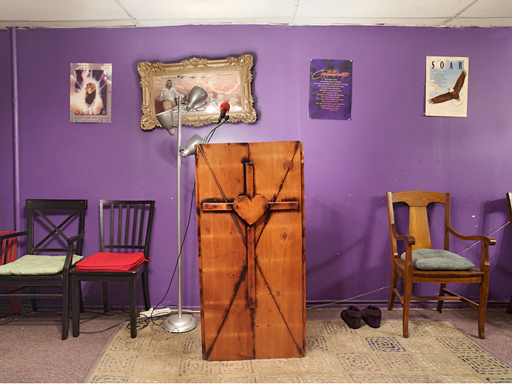
Dave Jordano's project documenting storefront African American churches titled Articles of Faith, just made made my otherwise blah Friday. Storefront churches have long been a source of fascination for me. (found via Andrew Sullivan who also links to this super interview)
The scene from My Dinner With André below is one of my favorites:
"I mean, André, let's say—I mean, if I get a fortune cooke in a Chinese restaurant, I mean, of course even I have a tendency—I mean, you know, I would hardly throw it out—I mean, I read it, I read it, and I—I just instinctively sort of—if it says something like-uh-a conversation with a dark-hared man will be very important for you, I mean, I just instinctively think, Well, who do I know who has dark hair, and did we have a conversation, and what did we talk about? In other words, I mean, I do tend to read it— but it's a joke, in my mind. I mean, in other words there's something in me that makes me read it, and I instinctively interpret it as if it really were an omen of the future. But in my conscious opinion, which is so fundamental to my whole view of life—I mean, I would have to change totally, I think, to not have this opinion—in my conscious opinion, this is simply something that was written in the cookie factory several years ago and in no way refers tome. I mean, the fact that I got it—the man who wrote it did not know anything about me, couldn't have known anything about me There's no way that this cookie could actually have anything to do with me. The fact that I've gotten it is basically a joke. And I mean, if I were planning to go on a trip on an airplane, and I got a fortune cookie that said, "Don't go," I mean I admit I might feel a bit nervous for about one second, but in fact I would go, because I mean, that trip is going to be successful or unsuccessful based on the state of the airplane and the state of the pilot. And the cookie is in no position to know..."
I mention it because I just stumbled across this little New Yorker piece on the actual man in the cookie factory.
More links: The obligatory wikipedia article, lots of youtube clips (all great), and my own personal train ride with André.
Also related: you can now find Andy Kaufman's parody My Breakfast with Blassie on youtube (!): Part 1, Part 2, Part 3, Part 4, Part 5, Part 6.

An hour or two ago my 3 year old and I were walking down a dark and narrow road in Yosemite National Park at night under an almost full moon.
him: Dad?
me: Yes.
him: Is this a garden or a park or a forest?
me: It's a forest, but it's also a National Park.
(silence)
him: It took a very very long time to plant all these trees. The trees are big and old.
(silence)
him: Wow.
(silence)
him: When we sleep in the forest will bears come and try to eat us?
me: No.
him: If we see a bear will you hold me very very tight.
me: Yes.
(silence)
him: This is a very very big park. In Brooklyn the parks are very small.
me: Yes indeed.
him: And there are no bears in Brooklyn.
me: No. Not any more.
him: That's sad.
(silence)
him: Can I plant a tree when we go home? Maybe a lot of them?
me: Let's plant lots of them
Related: Olafur Eliasson
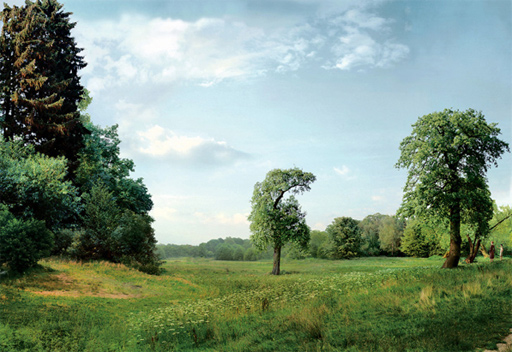
I recently saw the Beate Gütschow image above in person. She creates large scale idealized collage landscapes from scores of electronically grafted together images. The results are both seemless and unreal. For me the images evoke classic landscape painting more than they do other photographs and in thinking about this I realized that her process is probably not much different than tradtional landscape painters who generally either sit out in nature and take in a scene going from detail to detail or they sit in a studio culling details from memory. EIther way the result is idealized nature in which each element recieves more scrutiny than it would normally... These images are part of show/monograph by Aperture titled LS/S which features pastorals like the one above as well as similarly artifical black and white cityscapes. I haven't seen the book yet so I'm curious to see how the seemingly very different bodies of work work together.
More on Gütschow's work can be found on 52 photographers.
Raul Andres Jump3 from raul gutierrez on Vimeo.
Related: Bounce
sometimes,
nothing can save a collection of words
from reading like bad poetry.
My advice to photographers who want to show off their work is simple:
1. Put your work up on the web. Photographers who don't promote their work online risk being completely ignored.
2. Showcase either tightly edited portfolios or stream work as you make it. If you do both keep the stream clearly separate from the portfolio.
3. Unless you are a photojournalist primarily selling images for web consumption, put up big images. Don't worry about people stealing your images. Nobody is going to make a decent print from something you post online. Look at web images as promotion. Also don't watermark you images. Yes, some of your pictures will float around unattributed, but it's better than looking like a douchebag. Photoshop allows you to include authorship info that will travel with your image, just choose File Info from the File menu.
4. Don't use flash (if you use flash people can't link to your images, and they can't propagate around the web. You WANT your images to travel).
5. Don't worry too much about fancy design. People just want to be able to see your images and to quickly navigate from one to the next.
6. Tell stories.
If you know nothing about how to make your own website use one of these excellent sites to showcase your work:
http://arlosites.com/
http://www.behance.net
http://cargocollective.com
http://www.krop.com/creativedatabase
http://www.carbonmade.com
http://www.flickr.com
If you know a tiny bit about the web, use a cms, like tumblr, movable type, or wordpress. Really good gallery themes exist for all of them. Here's a simple tumblr theme that lets you upload very large images that scale to the size of the window.
I look forward to seeing your best stuff.
Updated 10/2009 with some new sites.
Someone named Henry send a short email today saying, "You said you would answer questions, here's mine: What's your thought process when you look a picture? Thanx.
-Henry in San Diego."
A few minutes ago I saw the image below by Cornelia Hediger which is part of a new show here in NY:
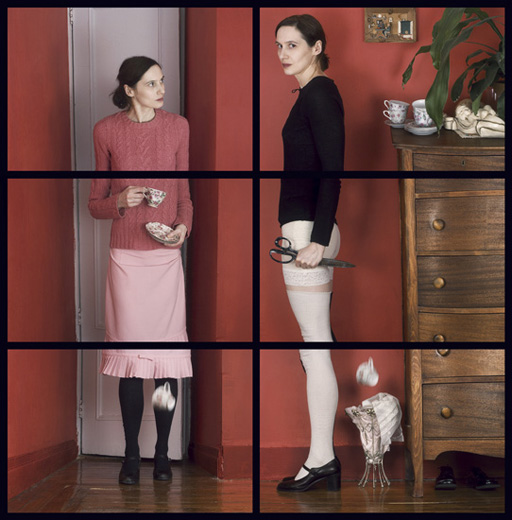
The collage evoked both Kelli Connell's work and Hockney's groundbreaking series of polaroid collage portraits:
 Imogen & Hermaine, Pembroke Studios, London, 30th July, 1982, by David Hockney
Imogen & Hermaine, Pembroke Studios, London, 30th July, 1982, by David Hockney
That thought inspired me to dig up a book about polaroids which I found, but didn't end up reading because I picked up a book about photobooth art which was next to it in the shelf. And then thumbing through that book I thought about how photobooths allow the same sort of interplay of space and time, and how much I enjoyed all the photobooth art books featured on the photobooth blog this week. Here and here for example:
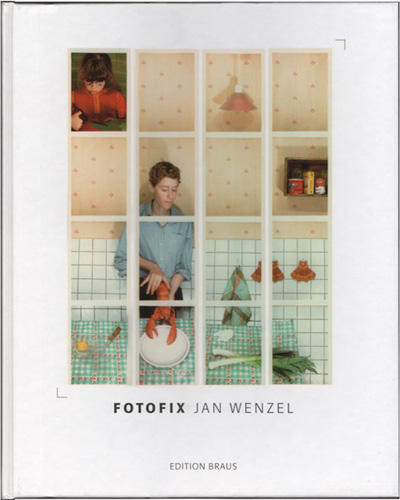
All this reminded me of how much I love photobooths and how, like polaroid film, they will soon be relegated to memory. And then I thought a day in 1975 when I went to a photobooth in Monterrey with my grandfather and how he told me to make a serious face and how he would make funny ones and how he kept half of the strip and I kept half of the strip and how that strip was our little secret. He kept his in the back of his wallet and I kept mine in the bottom of a treasure box. And I remembered how I always felt connected to him across the miles when I looked at my half of the strip. And then I imagined my treasure box rudely stuffed into some larger cardboard box and transported to some storage facility in the middle of nowhere in East Texas. And I thought about the heat and humidity there and how my picture of my grandfather with me wearing my most serious face in that photobooth in Monterrey is probably faded and yellow. And I missed my grandfather who I just realized has been gone for ten years now. I remember how at the end of each summer he and my grandmother would hug me tight and cry and tell me they would never see me again because they would be dead in the new year, and how I would cry too because I would believe them. Then I thought about how our youngest son has my grandfather's ears, and how our older son has his laugh and I felt that tug of a connection across both time and ether, so strong that it hurt. And I thought about how it always comes back to these things.
Related: Time Photography, Noah K
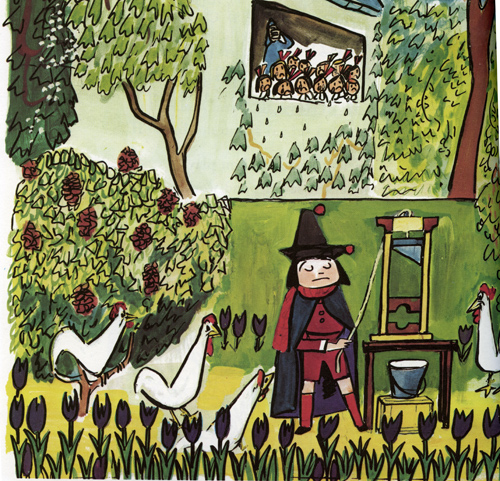
Plot summary of Madeline and the Bad Hat:
-The Spanish Ambassador and his family move in next to Madeline's boarding school.
-The son of the Spanish Ambassador, Pepito, starts to terrorize small animals (and the girls) with his slingshot.
-Pepito dresses up as a bullfighter and invites the girls to see the animals he has trapped from around the neighborhood.
-The girls refuse his invite. This sets him off on a mini rampage.
-The headmaster of the the girls school gives Pepito a toolkit in the hopes it will calm him down.
-He builds a guillotine and starts beheading chickens.
-Later he puts a cat in a bag and takes it out into the countryside so the cat can be attacked by a pack of dogs.
-Pepitio manages to get mauled himself but is saved in the nick of time by Madeline (she also saves the cat).
-A bandaged and repentant Pepito becomes a vegetarian and is so reformed he starts freeing animals from the zoo.
-The girls all love Pepito now and they watch him in his pajamas (and he them) through their adjoining windows.
Children's books are better weird.
Related: Babar Summarized or Why We Love Babar, Freeing the Elephants
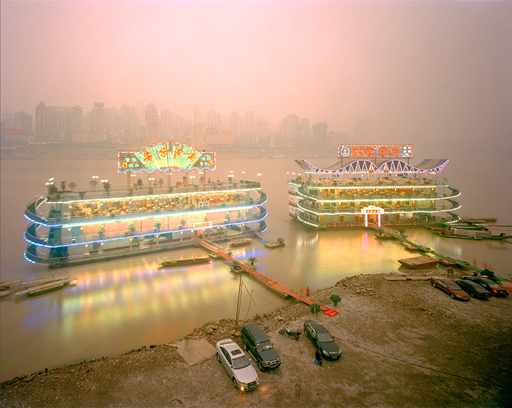
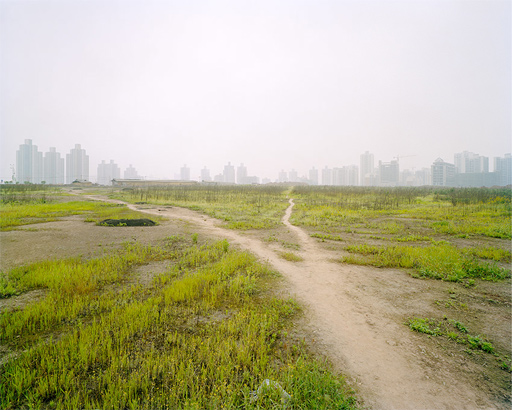
In 2007 at Review Santa Fe I got a chance to check out a new body of work by Ferit Kuyas. The project, a series he had been working on for some time on the city of Chongqing had just been renamed City of Ambition, a play on the iconic Steiglitz body of work documenting New York's rising skyline. The images stuck with me and I've come back to them many times. There are scores of photographers trying to capture a rising China, but Kuyas has a poet's feel for the place. His images feel like Chongqing to me. Anyway I wanted to report that Ferit's website has recently been revamped and he now has a full set of images from this epic project online. Even better, if you happen to be in London, you can see his beautiful prints in person at Photofusion where he has a solo show running. Also he will be speaking at the gallery on September 18th.

20x200 turns one today. Yay us!
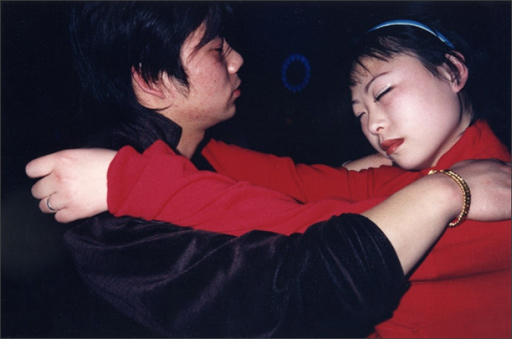
I noticed that one of Bertien Van Manen's photos, Couple and Painting, Grooves Bar - Shanghai, 1998 (not the image above), is available as an edition via MOCP. If you don't know about the MOCP store you should check it out, MOCP offers prints from a super lineup of contemporary phtographers. Couple and Painting led me to revisit Van Manen's website which has several more pictures from that project which expertly evokes a certain stratum of urban life in late 1990's China. More images as well as other projects over at Yancey Richardson
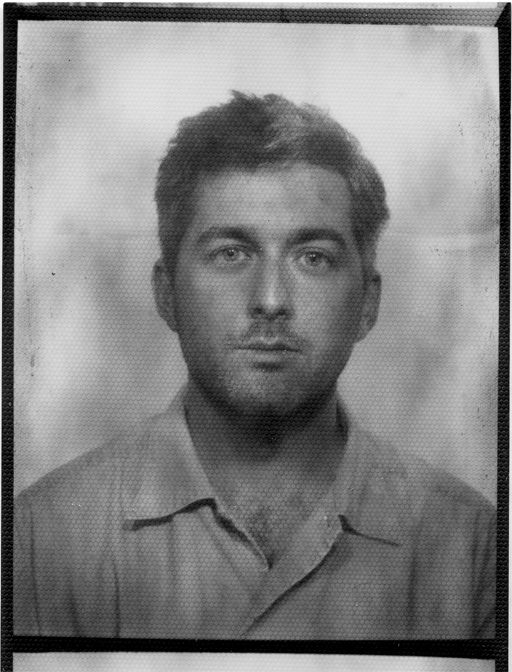
"Message to my future self.
You were at Silvercup Studios tonight. It had been a long shoot and nothing much was going according to plan. When the director wrapped you walked up onto the set, a beach scene, took off your shoes and built a sand castle when nobody was watching. In the car home you passed a bar and remembered they had a photobooth. The place was closing up, but you decided to tell the driver to stop. You got out and made this series of pictures.
At home you have three varieties of tomato plants on the fire escape (Green Zebras, Black Krims, and De Pintos); all are in full bloom. You will eat tomatoes like apples before you sleep.
Lately you have fallen into dreams in which your room falls away and you are out under starry mountain skies.
You see beauty all around. Maybe you will read this in 2004 and think it naive. Maybe you will forget it or lose it. Maybe you will read it and remember what it was to be alive on this day.
-September 4th 1994."
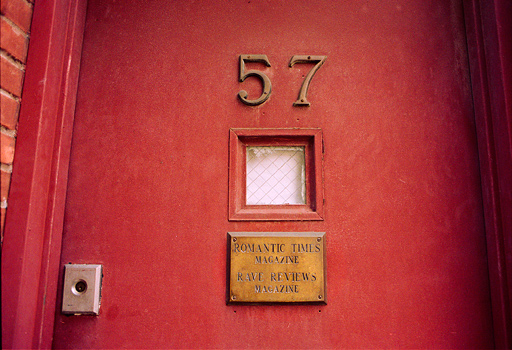
My grandmother had a painting of the sea in her dining room. The canvas depicted a violent sea at night. It was painted by an aunt and was both totally amateurish and utterly compelling. I can't tell you how many times I drowned myself in those waves. It was a scene not unlike the one below by Willem van de Velde (the great Dutch painter of the sea) or of the seascapes of countless artists, known and unknown, who have tackled versions of the same theme - a dramatic sea, threatening clouds, nature unfurled.
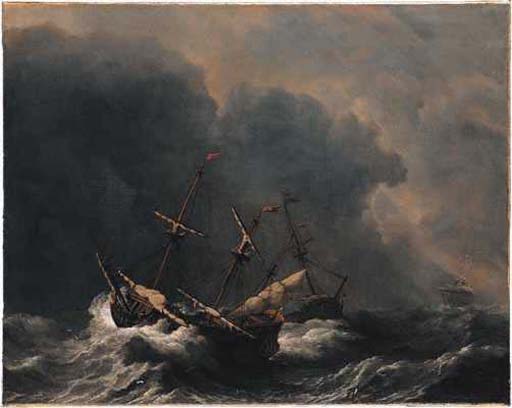
Photographers of course even at the birth of the medium were photographing the sea.
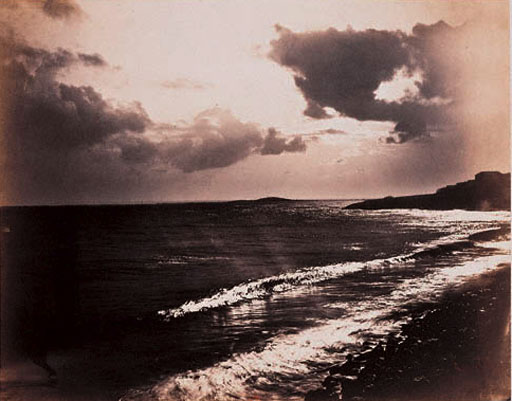
Gustave LeGray was out photographing the sea a few years after photography was invented and (I believe) was trying to recreate the drama of canvases of the great Romantic seascape painters of his day, artists such as Frederic Edwin Church,William Turner, and Winslow Homer. But LeGray was faced with a problem. If he properly exposed for the ocean, the sky would be blown out to white. And if he exposed for the sky, the ocean would be an underexposed featureless black so he pioneered a technique of double printing sky and sea from two negatives and 150 years later he is remembered for his seascapes (his work sells for hundreds of thousands of dollars).
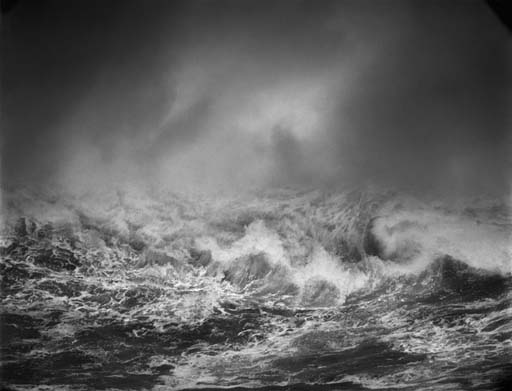
The photographer DoDo Jin Ming is obviously steeped in all these traditions and by using vintage techniques similar to LeGray's (printing sea and sky from separate properly exposed negatives onto one image) and by managing to have herself placed almost directly within the maelstrom of crashing waves (often lowered by rope from rocky cliffs) she's managed to capture what some of the great seascape painters imagined while looking down into the froth from the safely of the cliffs above. In doing this, she manages to elevate this most banal of subject matter into something sublime.
Amazon UK has a copy of her book available. Doesn't seem to be available in the states.
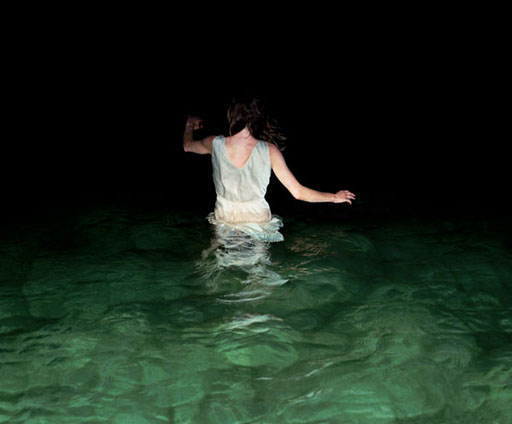
I first came across the Bianca Brunner's work at Aperture's ReGeneration show a few years ago where the image above from her Limbo series was prominently featured. Google Brunner a Swiss born photographer living in England and most of the top results are bloggers wondering where they can see more of her work. A bit of digging reveals work from both her Limbo and Hotel series on commentart.com (text here). Another enigmatic series titled Wood is also online. Enjoy.
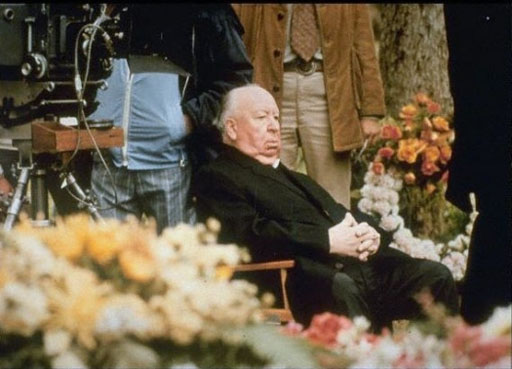
You wouldn't guess it from this blog, but my first love in the arts is not photography, but film and part of every film lover's bookshelf is Truffaut/Hitchcock in which the Truffaut interviews Hitchcock. Today I was googling a quote from the book when I found a site that contains recordings of the interview sessions. 25 MP3s in all. Exciting stuff for your inner film nerd.
Related: pranks in Vertigo, Hitchcock psychology, NYTimes review of Rear Window, NYTimes review of Pycho, NYTimes North by Northwest review, on MacGuffins, Hitchcock cameos, and A wonky but interesting essay on color symbolism in Vertigo.
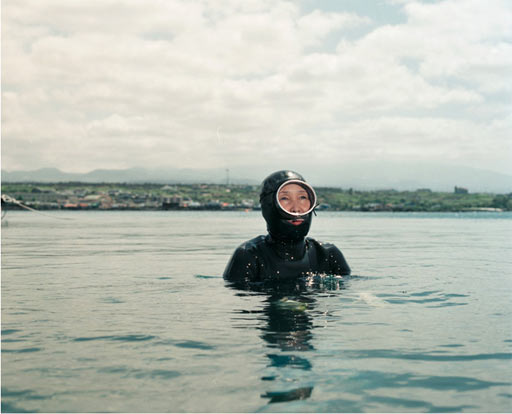
Ian Baguskas who I've linked on this site before and who has worked with us at 20x200 has a nice series of South Korea portfolios worth checking out. My favorite of these is titled Haenyeo. Haenyeo translates as 'sea women' and is the name used for the female divers of Jeju Island. For about 3 centuries these ladies have been diving up to 80 feet to collect octopus, abalone, and sea weed and until recently drove the economy of this island known for it's many rocks, winds, and women. Korean tourism promotes the haenyeo as mermaids but it's a a hard scrabble life and partially because of this, their numbers are declining precipitously. Only around 5200 are thought to be left, down from 20,000 in the 1960's and 40,000 in the 1930's. More than half are in their mid-60's.
Small beasts from themexican on Vimeo.
The kids dug up some old Halloween costumes today. Blame the camerawork on Jenn.
Related: Happy Halloween